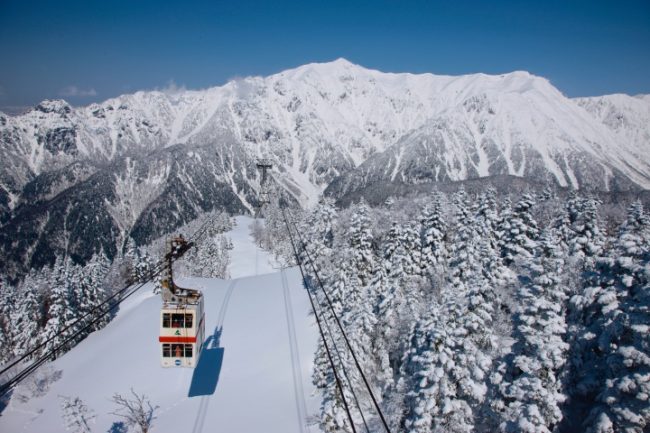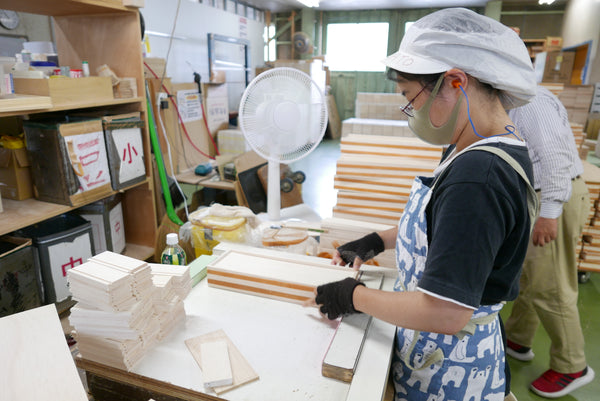 |
| Shinhotaka Ropeway in Autumn |
Hello everyone! In my previous post I've mentioned six things to do in Gifu! There are much more that we can do besides visiting Shirakawa-go, the famous UNESCO world heritage!
Let's continue exploring on things we could do in Gifu! (^O^)/
Let's continue exploring on things we could do in Gifu! (^O^)/
7. Riding the Shinhotaka Ropeway
 |
| Shinhotaka Ropeway in Winter |
If you wondered what makes this ropeway so famous, it's because Shinhotaka ropeway is the one and only (yes, one AND only!) two-tiered gondola!
Boarding the ropeway gives you a panoramic view of the alps in northern Japan from the observation deck that stands at an high altitude of 2,156m.
Additionally, this ropeway is actually comprised out of two ropeways. First was a short 200m climb to Nabedaira Kogen (En: Nabedaira Highlands) from the bus stop. Alternatively you can also drive up to Nabedaira Kogen (but there's no bus service to this highland). After the first ropeway, you will find public bath, little shops (including restaurants) and galleries, and of course, the visitors' centre. You'll also see some hiking trails and the starting point of double decker ropeway of Shinhotaka ropeway.
The double decker goes up to the upper station that has an observation deck as well as restaurants and souvenir shops. Hiking season are usually during summer (generally June~Sept). Here is where hikers hike into further points of the mountains. You can actually descend to Kamikochi or even climb further to Nishi-Hotakadate, but proper hiking equipment and preparation is necessary.
For this ropeway, I personally recommended to visit during autumn and winter for the best views! You also get to see a lot of greens during summer but I personally just prefer autumn and winter. Round-trip will be 2,900 JPY or 1,600 JPY one way from the bottom bus stop, and 100 yen cheaper if you're going from Nabedaira Kogen.
8. Relaxing in Okuhida Hot Spring Villages
 |
| Shinzansou Onsen |
Besides Gero that you always see on JR Takayama Hokuriku Tourist Area Pass that has lots of hot spring, Okuhida has a region that has abundant natural hot spring, you could say that they have the highest number of hot air baths in Japan!
Whether you fancy staying overnight, or going there as a day trip, this place would satisfy you as this onsen village comprises of five onsens located in central Japan! Imagine surrounding yourself amongst the alps throughout different seasons as you relax your body and mind here, it's absolutely healing!
It's not too far from Takayama, and you can easily book an express bus (approx. an hour on road) at less than 1,600 JPY. Then you can take a loop bus around to your preferred hot spring.
Also, you get to see the Hirayu waterfalls in Hirayu Onsen, or ski facility nearby during winter; or if you like beef, please visit Fukuchi Onsen for their morning market specialties - especially Hida beef!
Matcha Japan has a good write-up of this region that I suggest checking it out here.
9. Experiencing Hot Spring in Gero
 |
| Yumeguri Tegata - A pass that allows you to enjoy onsens! |
If you happen to feel like staying in a ryokan (Japanese inn) and wish to get to the city easily, perhaps Gero would be a good place to go too! Being said as one of the top three onsens, if you are staying overnight in Gero, you can definitely consider to also use the inn's shuttle services between Nagoya and Gero Onsen too!
It was also said that the waters of Gero onsen are so luxurious as they work wonders on the skin! Also, there's a riverbed that features a free-of-charge natural outdoor bath!
One unique part about Gero is that, you can also spend 1,300 JPY to purchase a wooden pass called Yumeguri Tegata. This pass allows you to enjoy three onsens among 30 participating ryokans! You can use this pass for any three facilities within 6 months and also keep it as a souvenir.
The list of places that you can use Yumeguri Tegata is here (Japanese only).
10. Checking Out Old Streets of Mino
 |
| A shop in the streets of Mino |
In my previous post I've vaguely mentioned about how much traditions have been preserved in Gifu prefecture. If you walk around the old streets of Mino, you will see that the Edo-esque feels are still well-retained! There is also the Mino Washi "Akari" Art Exhibition of Japanese paper sculptures that will be held annually during October.
The artworks will be on display are contributed from all over Japan, and will also be illuminated in the streets that gives Mino a dreamy atmosphere.
11. Knowing and Making Mino Washi Paper (Japanese Paper)
| Illuminated Mino Washi |
Though not foreigner-friendly as there is a huge lack of foreign language information, in Mino-Washi Museum, you can check out the history of Mino Washi paper that has been telling stories for at least 1,300 years. You can definitely spend from 500~3,000 on courses to make Mino-Washi paper. There are different courses from making the paper, wetting the paper, making lanterns, making postcards/ certificates, and there are also Mino-washi pro routine courses that lets you experience being a pro washi maker for 1 hour, or for a full day! So far the courses are conducted in Japanese only.
Even if you aren't there to make washi, you can definitely visit their exhibitions! It has a long history since the past. Entrance fee is 500 JPY per adult. You can also purchase a 3-entry ticket to Mino-Washi museum, Akari Art Museum, and to the Former Imai's Residence.
12. Learning the Swordsmithing History from Seki Traditional Swordsmith Museum
| Sword-making |
Fan of swords? Then you must come to this place!
Remember from my previous post mentioning that wood is in high demands for smithing? This is why!
Along with Germany's Solingen and England's Sheffield, the city of Seki is one of the most well-known and highly regarded blade-producing areas in the world! Blades have been produced in Seki for over 700 years.
Here you can check the documentations and videos to public. You can even see sword forging in January 2, in the ceremony that marks the first forge of the year! You get to see the high quality products including kitchen knives, scissors, nail clippers, katana swords, etc. that are famous overseas too.
For English information, visit here.
Remember from my previous post mentioning that wood is in high demands for smithing? This is why!
Along with Germany's Solingen and England's Sheffield, the city of Seki is one of the most well-known and highly regarded blade-producing areas in the world! Blades have been produced in Seki for over 700 years.
Here you can check the documentations and videos to public. You can even see sword forging in January 2, in the ceremony that marks the first forge of the year! You get to see the high quality products including kitchen knives, scissors, nail clippers, katana swords, etc. that are famous overseas too.
For English information, visit here.
13. Gujo Odori Dance Festival
| Gujo Odori |
Odori means dance in Japanese language. The Gujo Odori is considered as one of the three most famous folk dances in Japan. They dance all night from Aug 13-16 (actually for longer periods from mid-July till early September but Aug 13-16 is where it peaks), called Tetsuya Odori (Literally means "Overnight dance"). People from all around Japan would gather together to dance all night!
If you're joining, you can wear a yukata and geta (wooden clogs), and dance in the circles! Don't forget to go to Gujo Hachiman, the city of crystal clear waters! You can stroll through the historical town there too.
14. Making Life-like Food Replicas
 |
| Gujo Hachiman Replica Food |
If you've walked past a traditional sushi or Japanese restaurant, you might realize that there are a lot of life-like food replica! You can actually make wax-based food replicas such as tempura, lettuce, etc.
Gujo is the city of these replicas and the replicas from Gujo are sold all over Japan. Amazing, isn't it? You can pay a small fee to experience making a replica in the city too! It doesn't require a lot of time either, so I'd say that you should try it!
I'll stop my list until here for today, but in my next post I'll write more! Such as:
- Hill of Humanity Park and Chiune Sugihara Memorial Hall
- Mt. Kinka and Gifu Castle
- Nagara RIver Cormorant Fishing
- Ogaki Festival... and more!!
Until next time!
Part 3 here!









